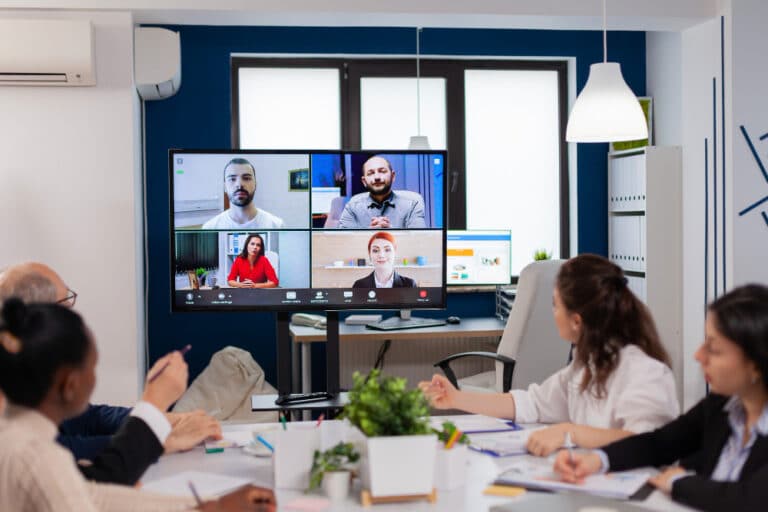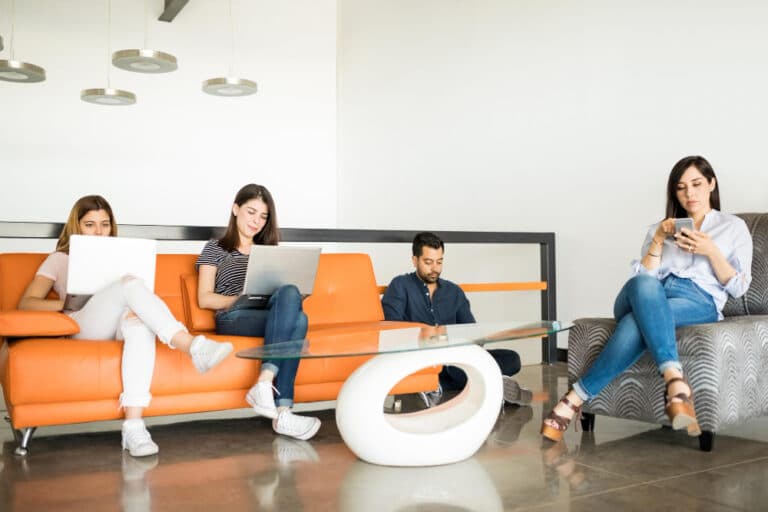Better Space Management Through Hybrid Office Design

Introduction
The COVID-19 pandemic has dramatically transformed the way we work, with many organizations adopting hybrid work models that combine remote and in-office work. As more companies embrace this flexible approach, designing a hybrid workplace that optimizes space management becomes crucial. One aspect of efficient space management is implementing a seating schedule in a hybrid environment, ensuring that employees can work in a safe, productive, and organized setting. In this article, we will explore the benefits of a seating schedule and provide practical tips on designing a hybrid workplace that maximizes space utilization.
With the rise of hybrid work models, where employees split their time between remote and in-office work, organizations face the challenge of effectively managing workspace utilization. To address this, seat scheduling software has emerged as a valuable tool for optimizing space allocation and facilitating a smooth transition to a hybrid workplace. In this article, we will explore the importance of seat scheduling software and the benefits it brings to organizations embracing a hybrid work environment.
Contents
Efficient Space Management
Seat scheduling software plays a vital role in optimizing space management in a hybrid workspace. It allows organizations to allocate office seating based on real-time occupancy data and employee preferences. By using this software, companies can determine the number of available seats on any given day, ensuring that the physical workspace is utilized effectively and efficiently. This reduces the risk of overcrowding and maximizes the utilization of office resources.
Social Distancing and Safety Measures
In the wake of the COVID-19 pandemic, ensuring the health and safety of employees has become a top priority for organizations. Seat scheduling software helps enforce social distancing guidelines by enabling organizations to configure seating arrangements that maintain proper physical distance between individuals. By implementing a seating schedule, organizations can control the number of employees present in the office at any given time and ensure that workstations are appropriately spaced. This not only minimizes the risk of virus transmission but also instils confidence in employees about their workplace safety.
Enhanced Employee Experience
Seat scheduling software improves the overall employee experience in a hybrid workspace. It provides employees with the flexibility to reserve their preferred seats in advance, giving them a sense of ownership over their workspace. This personalization aspect can contribute to increased job satisfaction, productivity, and employee engagement. Additionally, the software allows employees to view and select seats close to their teammates, promoting collaboration and fostering a sense of belonging within the organization.
Seamless Communication and Coordination
Effective communication and coordination are essential in a hybrid work environment, where employees may work from various locations. Seat scheduling software often integrates with other collaboration tools, such as shared calendars or instant messaging platforms, facilitating seamless communication among team members. Employees can easily check the availability of their colleagues and schedule in-person meetings or collaborative sessions accordingly. This integration streamlines communication and eliminates the challenges of finding suitable meeting spaces in a hybrid workspace.
Data-Driven Decision Making
Seat scheduling software provides valuable data and insights that can inform future workspace planning. Organizations can analyze usage patterns, identify peak hours, and optimize seating arrangements based on historical data. This data-driven approach helps organizations make informed decisions about space utilization, resource allocation, and even office layout modifications. By leveraging this information, companies can continuously improve their hybrid workspace design and adapt it to the evolving needs of their workforce.
In a hybrid workspace, where employees divide their time between remote work and in-office presence, seat scheduling software plays a crucial role in optimizing space management, ensuring social distancing, enhancing the employee experience, facilitating communication, and enabling data-driven decision-making. By implementing seat scheduling software, organizations can create a productive, safe, and collaborative work environment that meets the needs of their hybrid workforce. Embracing this technology not only streamlines workspace management but also contributes to the overall success and well-being of the organization and its employees.

Benefits of a Seating Schedule in a Hybrid Environment
Space Optimization:
Implementing a seat schedule allows organizations to optimize their physical workspace. By assigning seats to employees on specific days, you can make efficient use of available space and reduce overcrowding. This ensures that employees have the necessary physical distance to work comfortably and safely.
Employee Collaboration:
A seat schedule can be strategically designed to foster collaboration among team members. By assigning seats in close proximity to their teammates, employees can easily collaborate on projects, exchange ideas, and enhance teamwork when they are in the office. This arrangement also helps to strengthen employee relationships and create a sense of belonging within the organization.
Increased Productivity:
A well-planned seat schedule can contribute to increased productivity. By providing employees with designated spaces on specific days, they can set up their workstations in advance, reducing time wasted on finding available desks. Additionally, the consistent seating arrangement fosters a sense of routine, helping employees stay focused and organized during their in-office days.
Tips for Designing a Hybrid Workplace with an Effective Seat Schedule
Assess Space Requirements:
Before implementing a seating schedule in hybrid environment, evaluate your workspace to determine the number of seats available and the capacity of each area. Consider factors such as social distancing requirements and any specific needs of different departments or teams.
Flexibility and Employee Choice:
Provide flexibility in the seating schedule by allowing employees to choose their preferred days in the office. This empowers employees and accommodates their personal circumstances, leading to higher job satisfaction and engagement.
Technology Integration:
Implement a digital seat booking system or a shared calendar where employees can reserve their seats in advance. This not only helps in seat allocation but also enables easy communication and coordination among team members.
Collaboration Zones:
Designate specific areas within the office as collaboration zones, where teams can gather for brainstorming sessions or discussions. These zones should have the necessary tools and technology to facilitate collaboration, such as whiteboards, projectors, or video conferencing equipment.
Agile Workstations:
Consider implementing agile workstations that can be easily reconfigured to accommodate different seating arrangements. This flexibility allows for adjustments based on changing team compositions or project requirements.
Communication and Education:
Properly communicate the seat schedule policy to all employees and provide them with clear guidelines on how to use the system effectively. Conduct training sessions if necessary and address any concerns or questions they may have.
Designing a hybrid workplace that effectively manages space is crucial for organizations transitioning to a flexible work model. Implementing a seating schedule in a hybrid environment not only optimizes space utilization but also fosters collaboration, enhances productivity, and provides employees with a sense of structure. By assessing space requirements, offering flexibility, integrating technology, creating collaboration zones, and promoting effective communication, you can successfully design a hybrid workplace that maximizes space management and supports your employees’ needs in the post-pandemic era. Our Neoffice hybrid workspace solution does just what you need and more!
Neoffice Workplace Management Solution
Neoffice is built with a suite of workspace tools that help employees choose how and where they work while providing organizations with a platform to manage their hybrid workplace with ease and complete control.
The solution comes with 9 features on one single app – Team planner to manage a collaborative effort for a team, Seat Scheduling, Meeting room Booking, Hot Desking, Car park Slot Booking, Digital cafeteria to pre-order your meals at work, Employee commute solution, Survey forms. All Features are modular and the client can choose to subscribe to the relevant solution.
To know more about the solution, do drop a mail to hello@neofficesoftware.com or a call us on our Helpline +91 80 4680 5757

